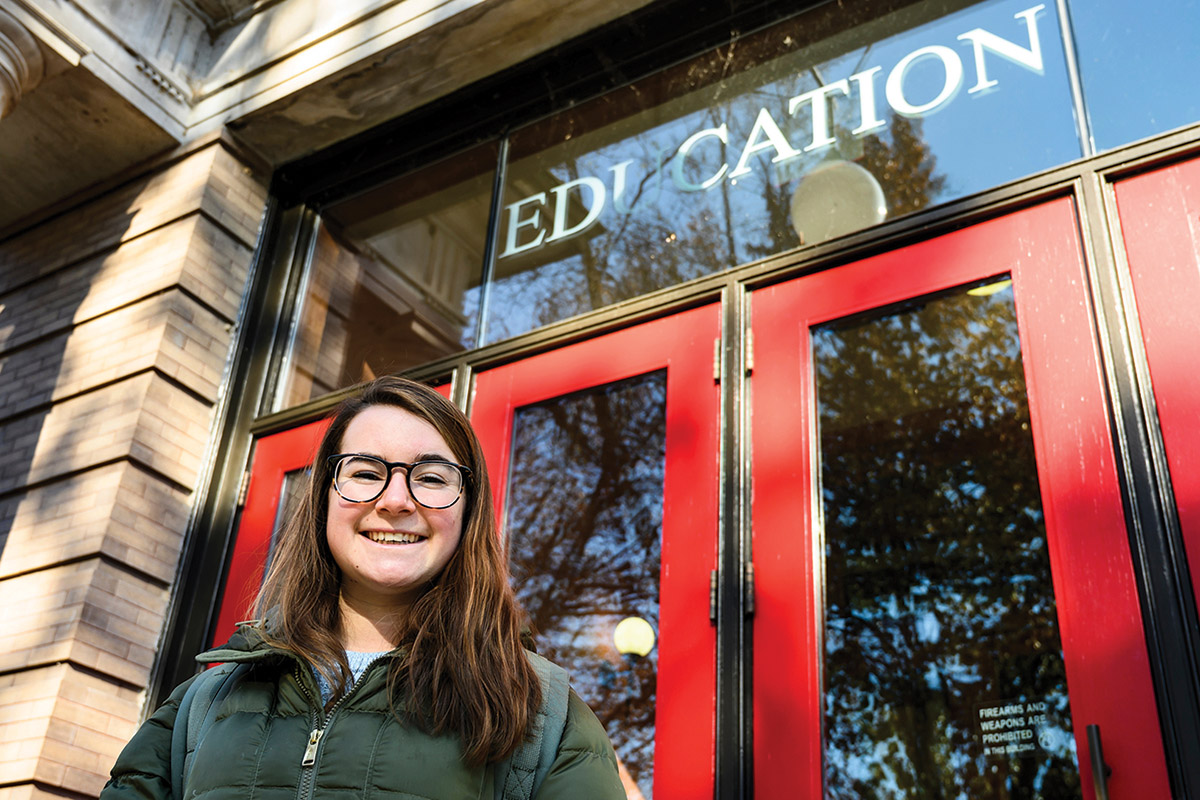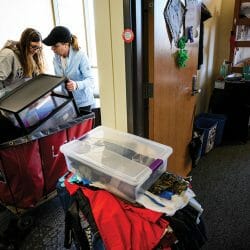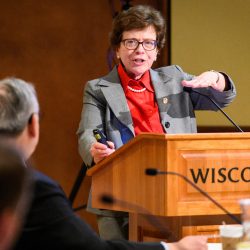A Laboratory for Financial Aid

Mackenzie Straub x’22 (pictured) was one of 796 incoming students during the 2018–19 academic year receiving free tuition through Bucky’s Tuition Promise. Jeff Miller
The first brainchild of the UW’s new Student Success Through Applied Research (SSTAR) Lab, Bucky’s Tuition Promise, has provided financial relief to nearly one-quarter of the Wisconsin-resident students in the 2018–19 incoming class.
By identifying a sustainable way to simplify the financial aid process for in-state undergraduates — covering four years of tuition and segregated fees for freshmen meeting income-level criteria — the SSTAR Lab created a solution to help the Office of Student Financial Aid (OSFA) provide more student support.
And it aims to do more. Although the lab began research on Bucky’s Tuition Promise more than a year and a half ago, SSTAR celebrated its grand opening — with a new office and classroom space tucked into OSFA — earlier this year.
“We as financial aid practitioners really were looking for ways to be more creative and innovative with how we do business and how we award funds to students,” says Derek Kindle, the UW’s director of student financial aid. As a result, OSFA decided to bring in Nicholas Hillman — an associate professor in the School of Education who studies higher-education finance and policy research — to provide his expertise and to direct the SSTAR Lab.
With nationwide concerns about college affordability, the SSTAR Lab, which also employs graduate students, aims to conduct financial-aid research that leads to practical and lasting solutions. Its direct partnership with the financial aid office is a rare one in the field — to Hillman’s knowledge, it’s the only lab of its type at a university.
“There’s just a big gap between what we do as academics and what practitioners need to solve problems in real time,” he says. “I think people are doing a lot of really innovative work with financial aid, but nothing in this format where we’re working in partnership with practitioners to help solve problems.”
Published in the Summer 2019 issue



Comments
No comments posted yet.